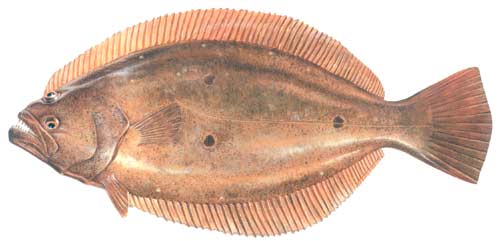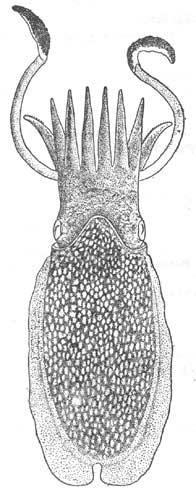Our understanding of China's freshwater fishes has gone through a process of continuous recognition and summary from perceptual to rational, then back to reality, and then to improved understanding for more than 2,000 years. The history of fish research in China can be roughly divided into four periods.

The first period of flounder was from ancient primitive society to 1700. During this period, people's understanding of living things was not in line with science. The ancient Confucian scholars saw themselves as extraordinary and wise, knowing everything. They were so-called knowledgeable and capable of memorizing, and they knew the names of birds, animals, plants, trees, insects, and fish. Some people say: "It is the shame of a Confucian to not know anything." He even said: "The fish in the East China Sea dropped a scale, and the Kunlun tree dropped a leaf. Everyone in the world can know this." People at that time knew nothing about the morphology and anatomy of living things, and transportation was extremely inconvenient. They only relied on hearsay. When they heard that something existed in a certain place, they would pick up a pen to write down it. , add your own imagination. For example, "Erya" records about flounder: "There are flounders in the east, and they are called plaice." Another "Compendium of Materia Medica" says: "Flounder, fish each have one eye, walking side by side." There was a similar statement in Europe 1,700 years ago. What's more, as recorded in "The Classic of Mountains and Seas" about Ho Luo Yu: "The fish of Ho Luo has ten bodies in one fish, and its sound is like a bark, and the dog has eaten it and it has become carbuncle." It is also said: "The shape of the thin fish is like a tuna fish with one eye." "Youyang Zazu" records the seal-headed fish: "The seal fish is one foot and three inches long, and the four sides of its forehead are like seals, with characters on them. For large fish, the deceased should seal it first." There are countless such bizarre myths in ancient books. Due to the lack of anatomical knowledge, the definition of "fish" is very confusing. For example, molluscs such as squid are called cuttlefish and squid; amphibians such as salamanders and giant salamanders are called pike, salamanders, and salamanders; reptiles such as crocodiles are called Whales and higher mammals are called fish. Almost all animals living in water are called fish. This period can be called an unscientific period, and its representative works are: Erya, Classic of Mountains and Seas, Natural History, and Compendium of Materia Medica.

The second period was from 1770 to the beginning of the 20th century. This period was the period when foreigners studied Chinese fish. Since around 1740, the book "Systema Naturae" written by the Swedish Linnaeus was published, which laid the foundation of biological taxonomy and put the study of animal taxonomy on the right track. In 1771, the Danish Osbech traveled to Southeast Asia and southern my country. He recorded many Chinese fish in his travel notes and pioneered the study of Chinese fish. Subsequently, many foreigners went to various parts of China as missionaries, collected large quantities of animal and plant specimens, and took them to European and American countries for research. There are many research reports and works on Chinese fish, and they are very important. In short, this is a historical relic of foreigners studying Chinese fish. Since then, although foreigners have withdrawn from their dominant position in studying Chinese fish, they still continue to this day.

The third period of squid (cuttlefish) begins in 1927 to the present. This is the period when the Chinese themselves study Chinese fish. In 1927, Mr. Shou Zhenhuang was the first to publish "Chronology of Fishes of East China", which opened the curtain for Chinese scientists to study Chinese fishes. Immediately afterwards, many forefathers in the field of biology returned from overseas studies and conducted a series of regional fish resource surveys, especially pioneers in ichthyology research such as Fang Bingwen, Zhang Chunlin, Wu Xianwen, Chen Jianshan, Wang Yikang, Zhu Yuanding, and Lin Shuyan. , published a series of systematic survey reports, laying the foundation for my country's ichthyological research. After several generations of efforts, my country's current level of ichthyological research has been at the forefront of the world. In particular, he has made remarkable achievements in fish morphology, anatomy, animal geography, etc. Through a series of planned, nationwide fish resource surveys, freshwater fish specimens in water systems and regions across the country were collected, and a number of fish specimen museums, represented by the Freshwater Fish Museum of the Institute of Hydrobiology, Chinese Academy of Sciences, were established. It provides important infrastructure and conditions for the development of my country's ichthyology research into new scientific fields.
The fourth period begins in the 1960s until now. Scientists from the Ichthyology Laboratory of the Institute of Hydrobiology, Chinese Academy of Sciences, under the leadership of the famous ichthyologist Academician Wu Xianwen, compiled my country's first ichthyology masterpiece - The publication of the book "Cyprinology of China" has attracted great attention from the international ichthyological community. On this basis, my country's ichthyology community has successively published a series of fish records of provinces, regions, and river systems. Basically, I have a comprehensive understanding of the classification system, species identification, and geographical distribution of freshwater fish in China. In the past two decades, my country's ichthyological research has gone far beyond pure morphological classification. The introduction of new technologies and new concepts has given ichthyological research new content and new life. In carrying out research on taxonomy, phylogeny, biogeography, evolutionary biology, biodiversity, biological resources and other fields, in addition to retaining the original morphological and anatomical methods, genetics, molecular biology, biochemistry, The participation of biophysics, biomathematics and other disciplines has introduced new connotations and new methods into taxonomic research. I believe that my country's ichthyology research prospects are broad.
animal tags:
We created this article in conjunction with AI technology, then made sure it was fact-checked and edited by a Animals Top editor.